Walking into many admissions offices today feels like stepping back in time. Papers are scattered everywhere, printed emails are stuffed into folders, and sticky notes cover every surface. Staff juggle Excel sheets that haven’t been updated in weeks.
Meanwhile, the students they’re trying to serve live in a completely different world. They can track their Uber in real-time and see the exact status of their Flipkart order—yet when it comes to something as important as financial aid eligibility, they’re told: “We’ll get back to you in a few days.”
This disconnect isn’t just frustrating—it’s costly. In an era where student expectations for instant, personalized service continue to rise, admissions offices running on outdated systems are losing qualified candidates to competitors who can respond faster and more intelligently.
The solution? A modern CRM system.
Think of a CRM (Customer Relationship Management) system as the central brain that transforms your admissions office from that chaotic, paper-filled room into a streamlined operation. No more searching through sticky notes or digging through old spreadsheets to figure out if Jai from Indore called two weeks ago or just last Tuesday.
With a CRM for higher education, everything you need is in one place. When that prospective nursing student calls, you instantly know which events they registered for but skipped, whether their parents attended the interactive session, and which emails actually caught their attention.
But here’s the real value: modern CRMs don’t just store data—they interpret it. An effective CRM software for higher education can reveal things like which financial aid packages encourage candidates to enrol, and which recruitment strategies work (spoiler: it’s not generic brochures).
Why this matters now
Your students aren’t comparing your admissions experience to the college down the street. They’re comparing it to Netflix, Amazon, and even that sketchy car dealership that somehow sends better follow-up texts than most colleges.
The competition is fierce, let’s face it. These days, students have options like online degrees, boot camps, and certificate programs that your admissions team didn’t have to worry about ten years ago.
This is where modern technology can make the difference. A good higher education CRM doesn’t just track interactions; it helps you spot warning signals before it’s too late. If a student suddenly stops engaging, they might be experiencing academic or financial troubles. If a system isn’t in place to flag these changes, you won’t know until they’ve already transferred elsewhere.
Benefits of a Higher Education CRM: What’s in it for your institution?
1. Finally getting everyone on the same page
Most colleges sit on goldmines of data locked away in separate silos. Admissions team has one set of spreadsheets, financial aid another, and student services their own.
A community college, for instance, may not realize that students who attended an information session enroled at three times the rate of non-attending visitors – because the data was scattered across five different systems. A modern CRM unifies this information, turning hidden insights into actionable strategies.
2. Turning data into action
Anyone who’s stayed up late putting together reports for a meeting, praying the numbers are right, knows the pain.
A good CRM does this automatically, but more importantly, it gives you real-time visibility. Applications from a certian location suddenly dropping? You’ll know this week, not three months from now when it’s too late to do anything about it.
3. Following up with students
Multiple touchpoints are essential in college admissions – but few institutions have the staff for that kind of personalization. CRMs automate this outreach while keeping it relevant. No more generic “Don’t forget to apply!” emails. Instead, it’s “Hey Sarah, saw you downloaded our psychology program guide—here’s that faculty research opportunity we discussed.”
4. Making alums want to contribute
“Please donate” emails don’t inspire much action. You know it, we know it, your alums definitely know it.
What works? Connecting with what people actually care about. The former exchange student might love funding international programs. The former football player probably wants to support athletics. A smart CRM helps you match appeals to their passions.
5. Giving staff their time back
Maybe your admissions counselors don’t want to spend half their day copy-pasting reminder emails. They want to talk to students, and build connections.
Automation handles the repetitive tasks, freeing up your team to focus on what truly matters — the human interactions that make students choose your school.
6. Seeing the big picture
As soon as students express interest, intelligent colleges begin to track them. They keep an eye on the entire process right from the initial web visit, which gives them actionable insights and useful data.
7. Dismantling silos
Imagine a student struggling with tuition who tells financial aid, but the academic co-ordinator never hears about it. Three weeks later, the student withdraws, leaving staff blindsided.
With CRM, these conversations connect. Advisors get alerts and can step in with payment plans or work-study options before it’s too late.
8. Making students feel seen
Personalization is arguably the most crucial component of the enrolment experience.
First-generation students may need mentorship programs. Research-minded undergrads should hear about faculty opportunities. Student-athletes benefit from content tailored to their hectic schedules.
With a modern CRM system, students don’t feel like just another record in your database – they feel understood. And that completely alters their perception of your institution.
What matters in a higher education CRM
Vendors love showcasing flashy features that dazzle in demos but fall flat in real-world. Here’s what actually matters:
- Student interface that’s intuitive: If it takes more than three seconds to find a student’s information, your staff may not like it.
- Admissions workflows that handle reality: Multiple deadlines, scholarship requirements, conditional admits, program changes—your system should handle these complexities without breaking.
- Communication tools that actually work: Email, text, parent updates (where appropriate), all while staying compliant.
- Reports that make sense: Raw data isn’t useful. You need insights that truly support decision-making.
- Integrations that are easy to understand: Your CRM must communicate seamlessly with your SIS, LMS, financial aid system, and other platforms without requiring a team of programmers.
- Mobile access: Your staff needs to access information during college fairs and campus visits when they’re away from their desks.
How to choose the right CRM

1. Build the right team
Don’t let IT alone choose your CRM. Get input from the people who’ll actually use it daily—admissions counselors, financial aid officers, student services staff. And don’t forget graduate programs and continuing education, because they have completely different needs.
2. Prioritize problems over features
Before you watch any demos, identify what’s broken. Where do students complain most frequently? What drives your staff to frustration? Focus on real-world problems rather than imagined ones.
3. Ask tough questions during demos
Demos are designed to make everything look seamless. Respond with real scenarios:
- What happens when someone applies to three different programs?
- What occurs when a student leaves and returns two years later?
If they can’t handle the complexity, they can’t manage your reality.
4. Be realistic about timelines
Vendors will promise you’ll be up and running in three months. Plan for six to nine. And don’t launch during your busy season—summer implementations typically work best.
5. Get your processes straight
A CRM is only as effective as your data. Before implementing anything, document your workflows: How does new prospect data get entered? How do you handle duplicates? Who’s responsible for what?
Furthermore, training is an ongoing process. Schedule regular training sessions as your staff grows and the system evolves.
Top 10 CRM Platforms for Higher Education Institutions
Choosing the right CRM for higher education is crucial for higher education institutions looking to enhance operations and support the complete student lifecycle. Here are popular CRM options designed for higher education:
1. LeadSquared Higher Education CRM
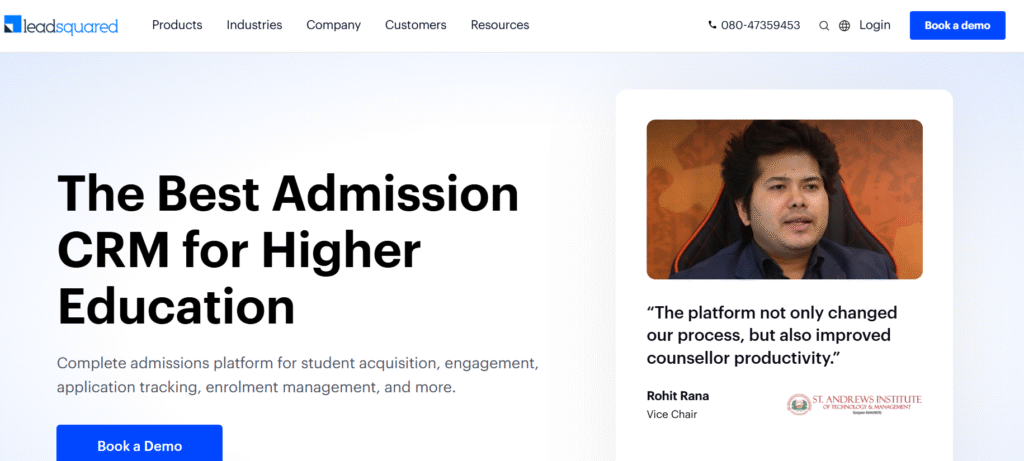
LeadSquared Higher Education CRM cuts through the noise by filtering prospects based on meaningful criteria—age, GPA, genuine interests, and specific program preferences. Instead of chasing every inquiry, the system assigns quality scores to help admissions teams focus on prospects most likely to enrol. This targeted approach saves countless hours that would otherwise be wasted on unqualified leads.
Also, FloStack by LeadSquared addresses one of admissions’ biggest challenges: after-hours inquiries. Rather than letting late-night questions sit until Monday morning, FloStack automatically routes them to a dedicated microsite and connects them with available agents. This responsiveness makes a real difference—students get answers when they need them, not when it’s convenient for the office. The result? Higher conversion rates because prospects don’t lose momentum waiting for callbacks.
Backed by AI, the platform doesn’t just react—it predicts. From creating hyper-personalized student journeys to forecasting which prospects are most likely to enrol, its intelligence helps admissions teams engage the right students at the right time and maximize every opportunity.
2. HubSpot for Education
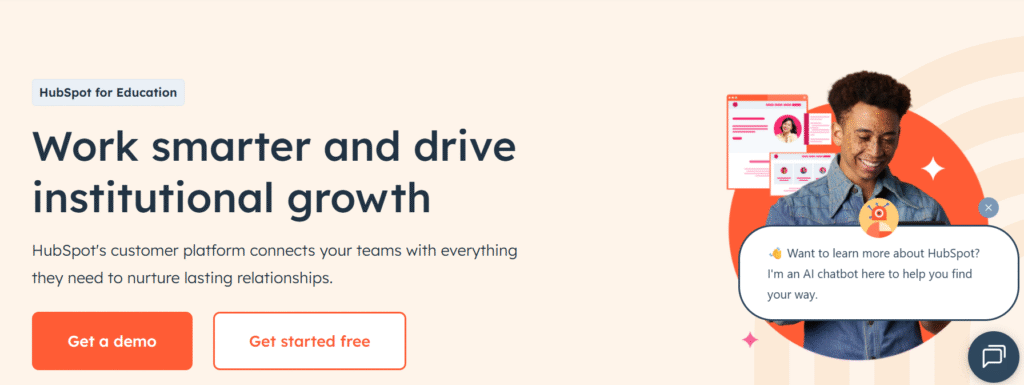
HubSpot for Education recognizes that not every college has deep pockets for expensive software. It’s built for institutions operating on tight marketing budgets who still need to compete effectively.
The platform covers the essentials—email tracking that shows whether prospects opened your messages, scheduling tools that eliminate email back-and-forth, and live chat features for capturing visitors while they browse your website.
3. Zendesk for Education
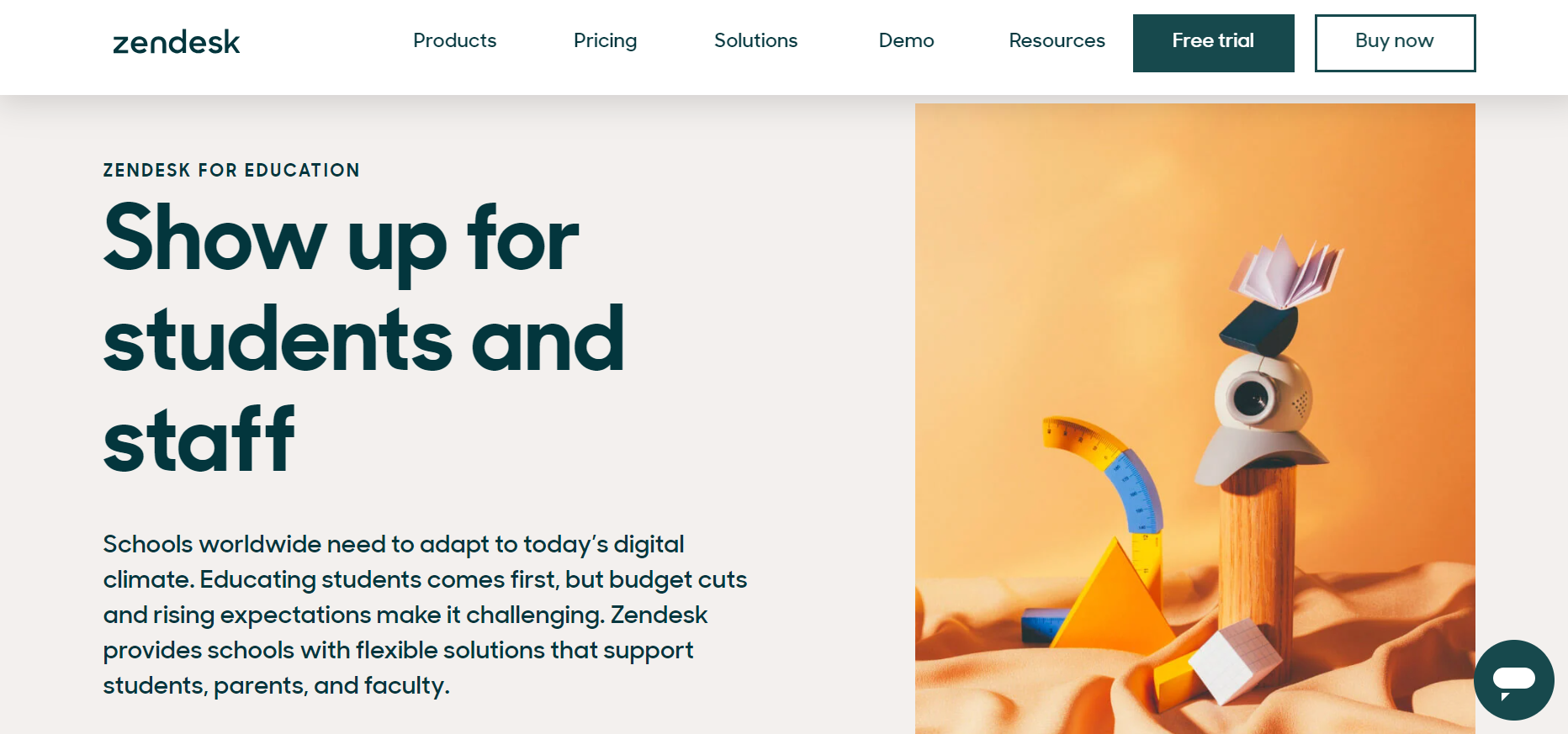
Zendesk takes a different approach by focusing on what colleges struggle with most: actually responding to inquiries. Instead of trying to be everything to everyone, it specializes in customer service for educational institutions. The platform consolidates all communication channels—email, chat, phone calls, and social media messages—into one manageable system.
4. Ellucian CRM
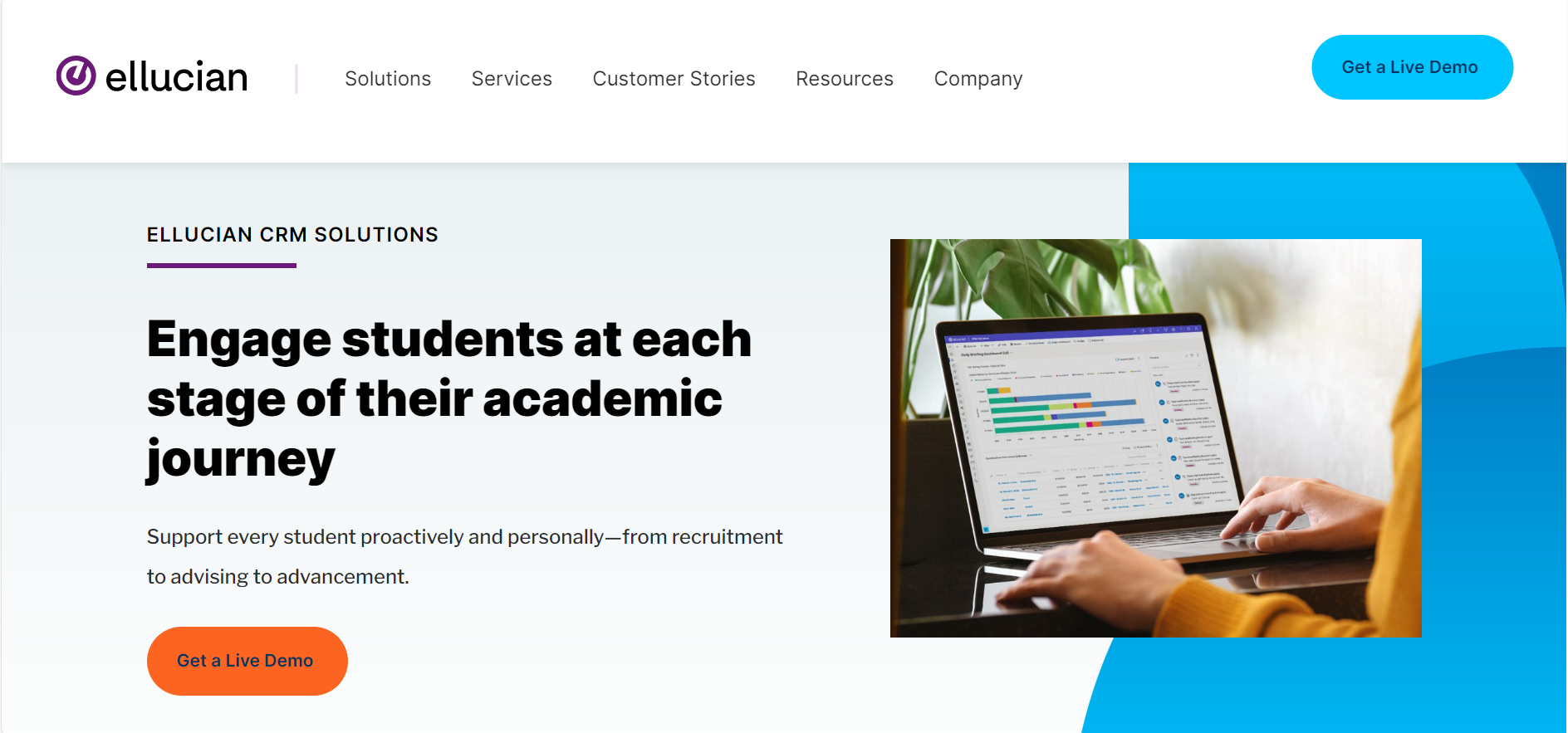
Ellucian CRM platform handles the full spectrum of institutional relationships—prospective students, current students, faculty, staff, donors, and alums—without treating them all as generic “customers.” Its fundraising tools recognize that soliciting donations requires different approaches than recruiting students, while support services features account for the complex, ongoing relationships colleges maintain with their communities.
5. Pipedrive
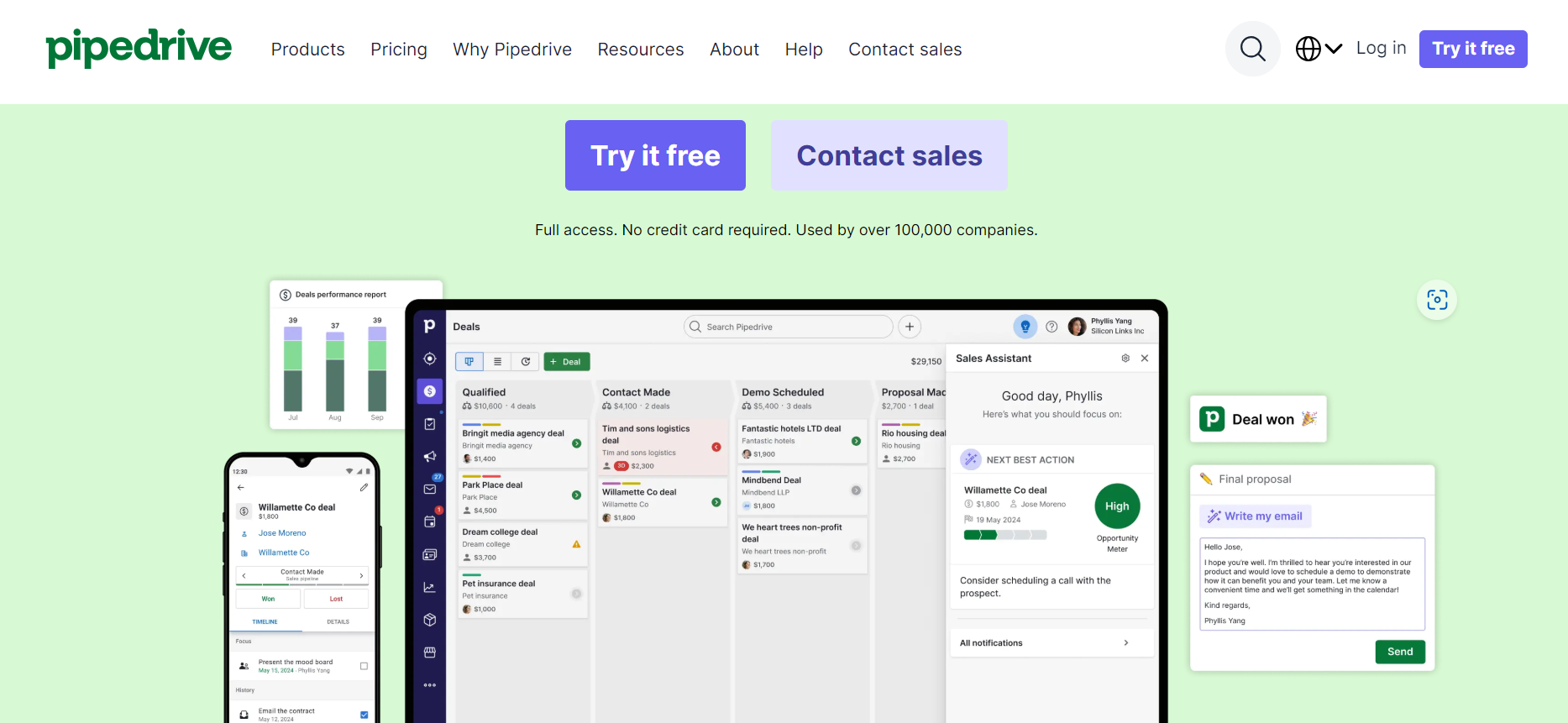
Pipeline focuses on what admissions and enrolment teams actually need: automation that doesn’t require advanced technical skills. The platform specializes in sales and marketing processes, which translates perfectly to recruitment and enrolment workflows. Instead of forcing staff to manually track every interaction and follow-up, Pipedrive’s automation handles repetitive tasks while keeping everything organized and moving forward. The interface doesn’t overwhelm users with unnecessary features—it simply makes daily outreach, prospect management, and enrolment tracking significantly more manageable.
6. Salesforce Education Cloud
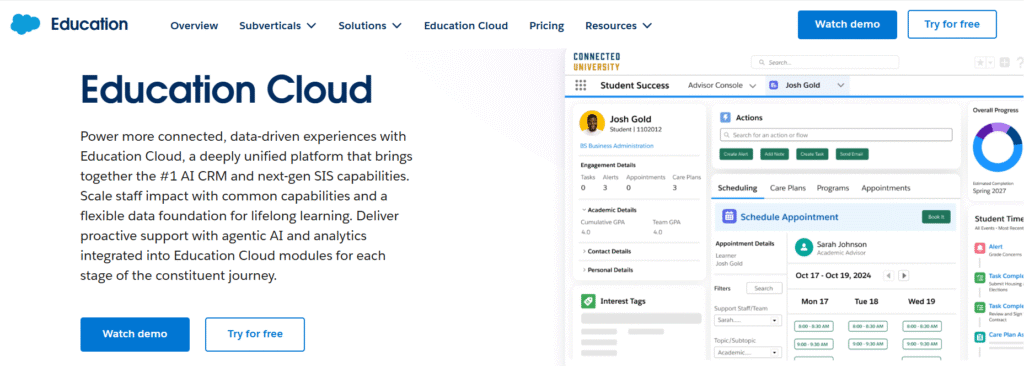
Salesforce Education Cloud Salesforce Education Cloud handles everything from initial inquiry to alum engagement. However, this comprehensive functionality comes with enterprise-level pricing that may be prohibitive for smaller institutions. The system automatically tracks family interactions, remembers communication preferences, and flags when students might need additional support navigating the application process.
7. Zoho for Education

Zoho CRM offers powerful functionality at a reasonable price point. The platform integrates seamlessly with popular payment gateways and supports comprehensive documentation requirements. Its multilingual interface allows staff to operate in multiple languages, and the mobile-first design recognizes that many prospective students access information primarily through smartphones. Offline sync capabilities ensure that intermittent internet connectivity doesn’t disrupt the enrolment process.
8. LeadGen CRM (by ExtraaEdge)
LeadGen by ExtraaEdge was designed for educational institutions managing high-volume admissions cycles. Its WhatsApp integration is central to the system, automatically sending application status updates, fee payment reminders, and document checklists while maintaining formal email trails for official records. The system handles complex admission cycles, from entrance exam score integration to merit list management.
9. TargetX

TargetX by Liaison delivers a full-scale CRM solution built on the Salesforce platform, managing the complete student lifecycle from recruitment through retention. The system combines enrollment and retention suites with flexible customization options, enabling institutions to adapt workflows to their unique processes while leveraging Salesforce’s robust integration capabilities.
10. Slate by Technolutions

Slate was built specifically for higher education admissions and excels at handling complex requirements—from managing different admission categories to integrating with entrance exam databases. What makes Slate particularly valuable is its ability to handle massive data volumes without performance issues during critical periods like result announcements or counseling rounds.
The Bottom Line
Implementing a CRM for higher education isn’t simple—it requires a fundamental shift in approach. However, the cost of sticking with spreadsheets and sticky notes is far greater.
The question isn’t whether you need a CRM. The question is whether you’re ready to act. This isn’t just about outpacing your competition—it’s about treating students like individuals. Why send weekly newsletters about campus life to students who prefer texting and care more about job placement statistics?
When you have an effective CRM, you can truly listen to what students want. Some universities are already anticipating student needs, personalizing every interaction, and building lasting relationships. Others continue asking students to “check back next week” for simple status updates.
Ready to see how a CRM can transform your approach?
Consider LeadSquared.
FAQs on Best CRM for Higher Education
What is a CRM for higher education?
A CRM (Customer Relationship Management) system for higher education is a platform designed to help colleges, universities, and training institutions manage relationships with prospective students, current students, alumni, and even parents. It centralizes data, automates communication, and tracks the student lifecycle from inquiry to enrolment and beyond.
What is the best CRM for higher education?
The “best” CRM depends on an institution’s specific needs—whether it’s streamlining admissions, automating marketing, improving engagement, or enhancing reporting. While generic CRMs can work, higher-ed–focused CRMs like LeadSquared stand out because they are tailored for student recruitment, admissions automation, and personalized communication
Why do colleges and universities need a CRM?
With rising competition for student enrolment, institutions can no longer rely on manual processes and siloed systems. A CRM enables higher education institutions to:
Automate admissions workflows
Improve lead capture and response times
Personalize outreach
Measure performance with detailed analytics
This leads to higher conversion rates and a smoother student journey.
How is a higher education CRM different from a traditional CRM?
While traditional CRMs are designed for sales and business pipelines, higher education CRMs focus on student recruitment and engagement. They handle unique needs such as inquiry management, entrance exam tracking, multi-channel communication (email, WhatsApp, SMS), and integration with education-specific platforms. LeadSquared, for example, is purpose-built for education workflows, ensuring institutions don’t have to “bend” a generic CRM to fit their needs.
Can a CRM help improve student enrolment?
Yes! CRMs like LeadSquared, with education-specific features, provide a structured way to capture and nurture student inquiries across multiple channels—web, social, call centers, or events. Automated communication, timely follow-ups, and personalized engagement significantly improve the likelihood of converting inquiries into enroled students.
What features should institutions look for in a higher education CRM?
Some essential features to look for include:
Lead capture from multiple sources
Automated nurturing and reminders
Application and document tracking
Admissions workflow automation
Multi-channel communication
Mobile accessibility for counselors
Robust analytics and reports
Solutions like LeadSquared combine all of these into one platform, making it easier for institutions to scale.
How does a CRM support student engagement beyond admissions?
A good CRM doesn’t just stop at admissions—it helps maintain ongoing communication with students through their academic journey and even after graduation. For example, institutions can use a CRM to share updates, gather feedback, and foster alumni relationships, strengthening their overall ecosystem.
Why is it important to ensure buy-in from all staff when implementing new CRM solutions?
To truly reap the rewards of a CRM system, staff engagement is key. Everyone, from admissions officers to alum coordinators, should feel part of the process and understand how this new technology impacts their day-to-day work.
Why does this matter? When staff are included early on, you gain valuable feedback about existing workflows and uncover potential hurdles before they become roadblocks. Input from across departments helps ensure the system is tailored to real needs—making it more likely the CRM will streamline, rather than complicate, daily operations.
Moreover, collective buy-in minimizes resistance to change and accelerates adoption. When everyone has a voice and sees the direct benefits—like fewer manual tasks, better access to data, and improved collaboration—the shift becomes less daunting and much smoother. The result: a campus-wide team ready to make the most of your CRM investment.
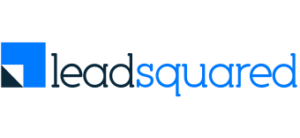




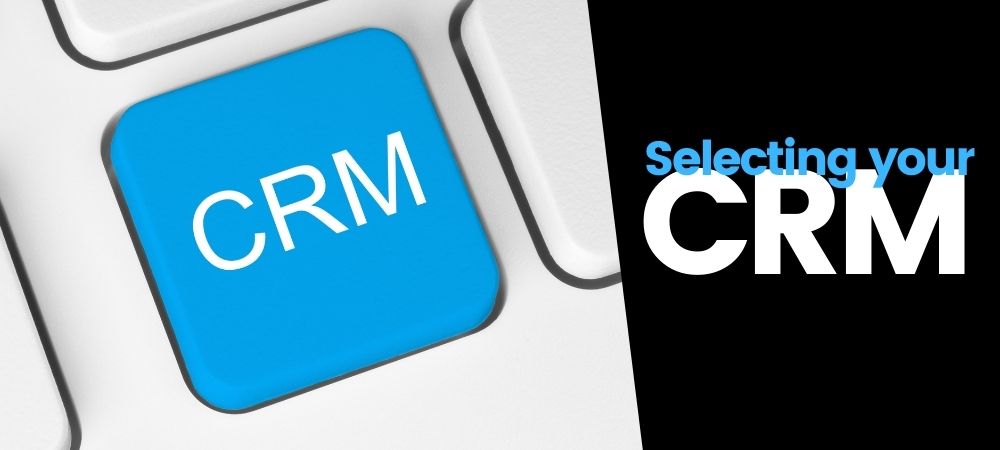


![how to ace your discovery call [template, questions, and tips] 19 Discovery Calls](https://www.leadsquared.com/wp-content/uploads/2022/03/Discovery-Calls-FI-80x80.png)
![how to increase customer engagement? [strategies and examples] 20 Customer engagement strategies](https://www.leadsquared.com/wp-content/uploads/2022/03/Customer-engagement-strategies-80x80.png)